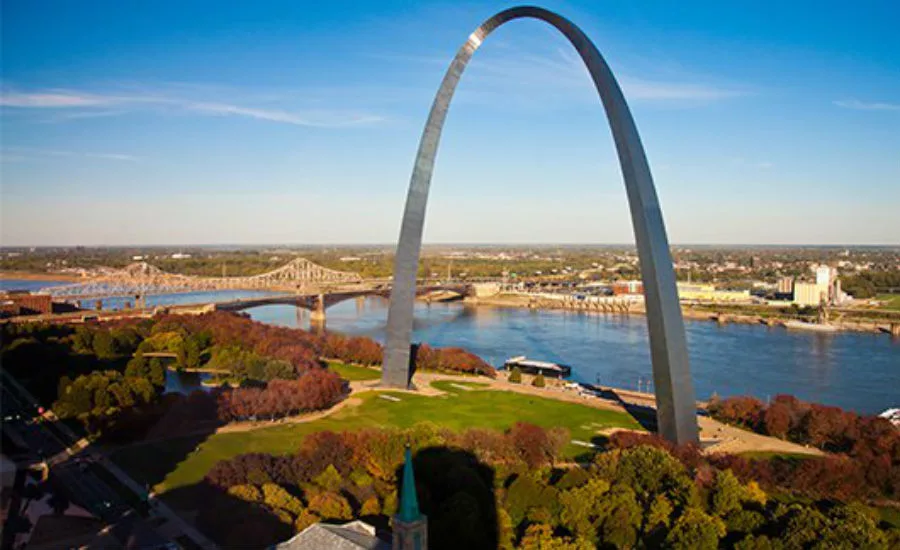Hayward Baker Does Foundation Work for Iconic Gateway Arch Monument
Ground Engineering Done for Museum Sub Basement

Hayward Baker’s St. Louis office recently designed and executed a solution for a difficult project under a new museum structure for the city’s iconic Gateway Arch.
“We faced difficult drilling conditions on a tight-access site, encountered layers of hard rock, then voids, clay fill voids and highly weathered rock,” says Greg Terri, the project leader at that office.
The company’s project involved 12 micropiles to support three column foundations and around 200 wall feet of drilled micropile beam and lagging. This allowed for deep excavations below the existing museum basement slab. The foundation and retention elements were varying lengths due to the karstic limestone.
The National Park Service, which manages the monument, has worked with national contractor McCarthy to significantly update the site over the last few years. The contractor, however, ran into an issue that required Hayward Baker’s ground engineering expertise. The goal was to install a mechanical suite to house electronics, HVAC and utilities under the museum.
“The only place to do it was beneath the museum, one basement level below the ground,” says Jeff Hill, director at Hayward Baker. “The contractor thought they could excavate all of it in rock, but the ground turned out to be soft clays and soils. It quickly became a pressing issue. We’ve worked with McCarthy for years, so they turned to us.”
Terri and his office were up to the challenge.
“Micropiles are generally used for a vertical load, but we had to design them for earth retention as well,” Terri says. “It all came down to good solid design and a lot of planning with the engineer so we could get the equipment in there. We didn’t exactly know what we were going to find, so we had a couple of drilling methods ready to go.
“When excavating to install the micropile pile caps that were to tie into the existing columns, we encountered H-piles at some locations. However their extent, condition and capacity could not be verified. That probably meant we didn’t need all of the micropiles, but on projects beneath a National Monument on a critical schedule there can be no room for error.”
The team finished the job in about four weeks, minimizing the disruption for the more than 50-year-old tourist attraction.
“It’s great for Hayward Baker to work on these national projects,” Hill says. “There’s a patriotic aspect but also they’re just really interesting from an engineering point of view. There’s nothing else like the Gateway Arch in the world; it’s a completely unique structure and a masterpiece of structural engineering and architecture. You really feel like you’re getting into a bit of history with every pile you drill. It was a privilege to work on it.”
Looking for a reprint of this article?
From high-res PDFs to custom plaques, order your copy today!




